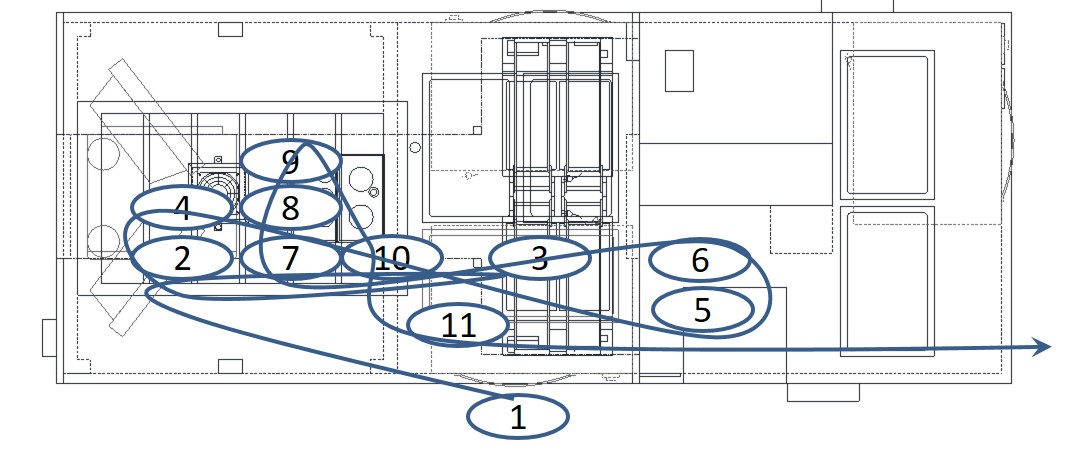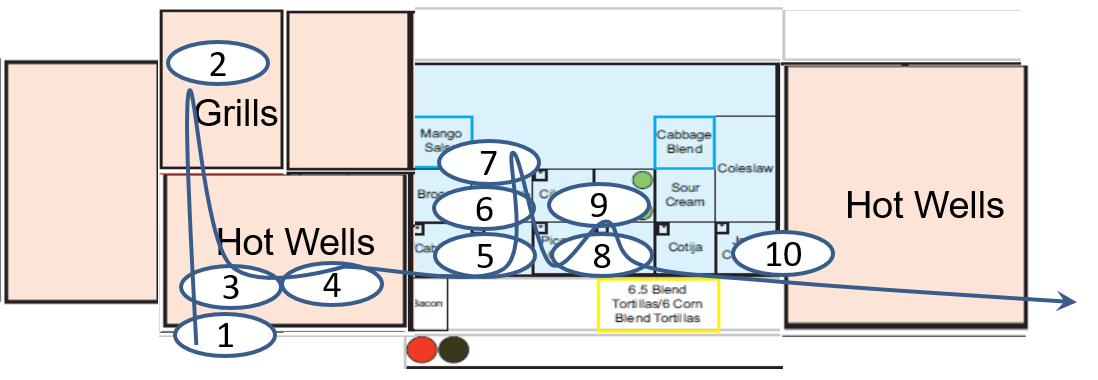One Industrial Engineering in Foodservice technique that we use to optimize design is process mapping. Another name that you may have heard for this same analytical process is Spaghetti Diagrams. The latter comes from the fact that many processes that are not designed optimally, often look like spaghetti in a bowl, as in the before picture seen here.
 Before
Before
 After
After
Process mapping is a method where any procedure is documented step by step, in as much detailed as possible, and then shown in a chart/drawing like the ones above to depict the flow. This one shows the process of making an item within a work station before and after a station is redesigned.
The employee starts at the location depicted by the number 1 in the diagram above and proceeds to move sequentially to all the other steps, using equipment within the station (grill) and reaching into product components and items located in hot and cold condiment wells, until the product is finished and delivered to the right of the station. The goal is to reduce the steps in the design, including eliminating those that are not necessary, as well as reduce the distances (both horizontal and vertical) between the steps between the different areas of the workstation.
Although the distance from one space to the next within a workstation is often not long in typical restaurant applications, since this step is repeated over and over again throughout the course of the business hour and day, it begins to add up to real time that drives better efficiency. The result of this gain in efficiency could deliver better customer service, improve product quality and/or reduce labor cost, depending on the focus and application that the concept decides to focus on.

In the process depicted in the drawing above, the end result of the new workstation design is a reduction in the distance travelled by more than 59 percent. You will notice that in the original process map, there is a lot of crossover, basally going back in the flow, which creates waste and also makes it more difficult to synchronize with another person, when a second individual comes onto the assembly station to help increase the throughput.
By the way, this technique is also applied to optimize the adjacencies between different workstations. In this application, the impact can be much larger, since the space between the workstations is typically in several feet.
Improvements in one small step in any of the processes can drive large efficiency impact for the concept that can result in improvements in unit economics.




